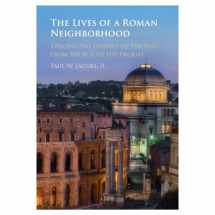
The Lives of a Roman Neighborhood: Tracing the Imprint of the Past, from 500 BCE to the Present
Book details
Summary
Description
In this book, Paul Jacobs traces the history of a neighborhood situated in the heart of Rome over twenty-five centuries. Here, he considers how topography and location influenced its long urban development. During antiquity, the forty-plus acre, flood-prone site on the Tiber's edge was transformed from a meadow near a crossroads into the imperial Circus Flaminius, with its temples, colonnades, and a massive theater. Later, it evolved into a bustling medieval and early modern residential and commercial district known as the Sant'Angelo rione. Subsequently, the neighborhood enclosed Rome's Ghetto. Today, it features an archaeological park and tourist venues, and it is still the heart of Rome's Jewish community. Jacobs' study explores the impact of physical alterations on the memory of lost topographical features. He also posits how earlier development may be imprinted upon the landscape, or preserved to influence future changes.


We would LOVE it if you could help us and other readers by reviewing the book
Book review



